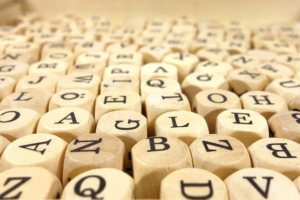When learning a language, you always have to start from the alphabet. This is the very first thing you need to study. So, this is also true if you are learning Italian. In this article you’ll find out:
- Why it is important to know the alphabet and its pronunciation in Italian;
- How many letters there are in the Italian alphabet;
- What’s the Italian phonetic alphabet;
- What’s the pronunciation of the italian alphabet;
- Where to find audio tracks and videos to listen to Italian pronunciation;
- How to memorize the Italian alphabet: some useful tips;
- How to practice Italian online with Global General.
Are you ready to learn everything about the Italian alphabet and its pronunciation? Keep reading the article!
Why It Is Important to Know the Alphabet and Its Pronunciation in Italian
Knowing the alphabet is essential for many reasons. First of all, the alphabet is used…to create words. If you don’t know the alphabet and its pronunciation, it will be impossible for you to write, read and speak correctly! Italian alphabet is not so different from the Enchli one, but pronunciation is. Actually, if you don’t know how to pronounce Italian letters properly, it will be really difficult to communicate in Italian; which is why it is essential that you learn the italian pronunciation and its main rules.
You need to learn the Italian alphabet and its pronunciation also to do the spelling. Indeed, even if some Italian words look similar to English in their written form, their pronunciation can be very different in the two languages. So, if you need an Italian to spell a word for you, you need to be able to understand which letters he or she is pronouncing. And vice versa, if you have to spell for a native-Italian speaker, you need to know each letter and its corresponding sound. So, learning the proper pronunciation of each letter of the Italian alphabet is essential to read correctly, understand Italian speakers and be understood by them when speaking.

How Many Letters There Are in the Italian Alphabet
The Italian alphabet only has 21 letters: 16 consonants and 5 vowels. Indeed, it doesn’t have 5 letters we use in English: k, j, w, x, y.
These letters have anyway entered the Italian language and are now used in words that directly come from English or other languages using them. For example we can find them in words like “yogurt”, “kiwi”, “xilofono”, weekend”, “joystick”, etc.
The Italian consonants are: B – C – D – F – G – H – L – M – N – P – Q – R – S – T – V – Z
The 5 italian vowels are: A – E – I – O – U
You should learn the italian vowels and their pronunciation really well because they will make a big difference in your accent!
What Is the Italian Phonetic Alphabet?
Here is the Italian phonetic alphabet (IPA) with a couple of examples. As you can see, the phonetic alphabet is longer: this is because some letters can be pronounced in different ways. Take a look at the following chart:
Consonants
| IPA | Exemples |
|---|---|
| b | banca; cibo |
| d | dove; idra |
| ʣ | zanzara; zaino; mezzo |
| ʤ | gelato; giungla; magia; jeans |
| f | fatto; cofano |
| ɡ | gatto; glifo; ghetto; lingua |
| j | ieri; scoiattolo; più; yacht |
| k | cane; scritto; anche; quei; kaiser |
| l | lato; lieve; pala |
| ʎ | gli; glielo; maglia |
| m | mano; amare; campo |
| ɱ | inverno; anfibio |
| n | nome; donare; punto |
| ŋ | fango; unghia; anca; dunque |
| ɲ | gnocco; ogni |
| p | prima; ampio; coperto |
| r | Roma; morte; quattro |
| s | sano; scatola; presentire; pasto |
| ʃ | scena; sciame; pesci |
| t | tranne; mito; alto |
| ʦ | zozzo; azione; marzo |
| ʧ | cena; ciao; farmacia |
| v | vado; povero; watt |
| w | uovo; fuoco; qui; week-end |
| z | sbavare; causa; presentare; asma |
Vowels
| IPA | Exemples |
|---|---|
| a | alto; sarà |
| e | vero; perché |
| ɛ | etto; cioè |
| i | imposta; colibrì |
| o | ombra; gogó |
| ɔ | notte; sarò |
| u | ultimo |
What Is the Pronunciation of the Italian Alphabet?
Let’s see how italian letters are pronounced. In the following chart you’ll see: letter, phonetic transcription, English pronunciation, example, translation of the example.
| Letter | Phonetic transcription | English pronunciation | Example | Translation of the example |
|---|---|---|---|---|
| A, a | a [ˈa] | /a/ | alligatore | alligator |
| B, b | bi [ˈbi] | /b/ | banana | banana |
| C, c | ci [ˈtʃi] | /k/ | caffé, cinema | coffee, cinema |
| D, d | di [ˈdi] | /d/ | dromedario | dromedary |
| E, e | e [ˈe] | /e/ or /ɛ/ | elefante | elephant |
| F, f | effe [ˈɛffe] | /f/ | figlio, fare | son, to do |
| G, g | gi [ˈdʒi] | /ɡ/ or /dʒ/ | gatto, giugno | cat, June |
| H, h | acca [ˈakka] | ∅ silent | hotel | hotel |
| I, i | i [ˈi] | /i/ or /j/ | isola | island |
| L, l | elle [ˈɛlle] | /l/ | luna, collega | moon, colleague |
| M, m | emme [ˈɛmme] | /m/ | mamma, mandare | mum, to send |
| N, n | enne [ˈɛnne] | /n/ | nonna | grandmother |
| O, o | o [ˈɔ] | /o/ or /ɔ/ | opinione | opinion |
| P, p | pi [ˈpi] | /p/ | palla | ball |
| Q, q | cu [ˈku] | /k/ | quadro | painting |
| R, r | erre [ˈɛrre] | /r/ or /ɹ/ | ratto | rat |
| S, s | esse [ˈɛsse] | /s/ | salute | health |
| T, t | ti [ˈti] | /t/ | tortura | torture |
| U, u | u [ˈu] | /u/ or /w/ | uva | grapes |
| V, v | vi [ˈvi], vu [ˈvu] | /v/ | vivere | to live |
| Z, z | zeta [ˈdzɛːta] | /z/ | zanzara | mosquito |
Where to Find Audio Tracks and Videos to Listen to Italian Pronunciation?
If you wish to improve your Italian accent and your word pronunciation, two main options open up to you: listening to Italian podcasts and audiobooks or watching Italian videos, TV series and movies. Listening is a great exercise to improve your pronunciation. Listening to the radio and to podcasts such as LearnItalianPod will help you improve your listening comprehension and to get used to the proper Italian pronunciation. On Radio Rai you can find many interesting programs, podcasts and audiobooks. If you are a beginner, we recommend you to listen to Rai Gulp or Rai Yoyo, two TV channels dedicated to children. A great way to practice is listening to audiobooks. You can download them on LibriVox, to listen to them to get used to the proper Italian pronunciation. Try to repeat the words that you find more difficult. On Radio Rai you can find many novels by great authors such as Hemingway, Carrol, Moravia, Cechov, Tolstoj, Pirandello, and many more. Well, there are many ways. On YouTube you can find tons of videos: you can find classes for foreigners with many exercises, like “shadowing exercises”, guided exercises, exercises with phonetic symbols, and so on.You can also watch some short videos such as documentaries, TV series, the news, and so on. When watching videos in Italian, start by putting English subtitles. then switch them to Italian when you feel confident enough and finally switch them off. Listen to Italian speakers, try to understand what they say and to repeat the new words. Write lists of vocabulary and use them in your next conversation with your native friends!
How to Memorize the Italian Alphabet: Some Useful Tips
Memorizing the alphabet and how to pronounce each letter is essential when learning a new language. If you want to learn the Italian alphabet, here are a few tips to help you do it fast.
Memorize it in the correct order. Just like in English, in Italian the alphabet follows an order: it goes from A to Z. To memorize it easily, learn it in the correct order from the beginning.
Link each letter with a sample word. Remembering the letters of the Italian alphabet will be easier if you link each letter with a sample word. It goes like this: “A come Albero”, “B come Bambino”, “C come cane”, and so on.
Listen to the proper pronunciation. Look for videos where an Italian speaker repeats the alphabet, so that you can listen to the proper Italian pronunciation of each letter and sound.
Repeat it! Now try to repeat! Listen to the Italian-native speaker and then repeat each letter with your best Italian accent!
How to Improve Your Italian With Global General
If you are looking for a comprehensive online method to learn Italian, Global General is the best solution for you! This e-learning method created by GlobalExam will help you learn Italian grammar, vocabulary and pronunciation: with just one easy solution!
This course is tailored for beginners and intermediate-level students to learn Italian completely online, in a dynamic and personalised way.
Global General offers 5 languages: Italian, English, Spanish, French and German. Every language goes from the A1 to the B2 level, according to the CEFR standards.
What’s included in our program?
Here’s our unique offer:
- Flashcards to help you learn new vocabulary and train your memory in a fast and fun way!
- Simulations to practice all of your language skills in real context, for all the competencies;
- Exercises for grammar, vocabulary and listening comprehension;
- A “did you know” section to deepen your knowledge of the language;
- 5000 detailed corrections in your language;
- Personalised feedback from our native-speaking coaches;
- Online conferences with our native coaches, with a practical component where you’ll be required to complete some exercises and you’ll be given personalized corrections;
- Validation of the acquired competencies every 5 simulations with certificates;
- Scores for every exercise to help you understand your level and progress;
- 150 hours of unique content and 500 audio tracks.
Learn Italian at your own pace and choose which skills you want to practice more and receive personalised feedback from our native coaches. With Global General you can improve all of your skills, even pronunciation: the audio tracks and the video conferences will give you the opportunity to directly listen to and talk to native speakers, so that you can get used to their accent: a perfect way to improve your pronunciation and learn each sound of the Italian alphabet!
Sign up on our website and start learning Italian today with Global General!



